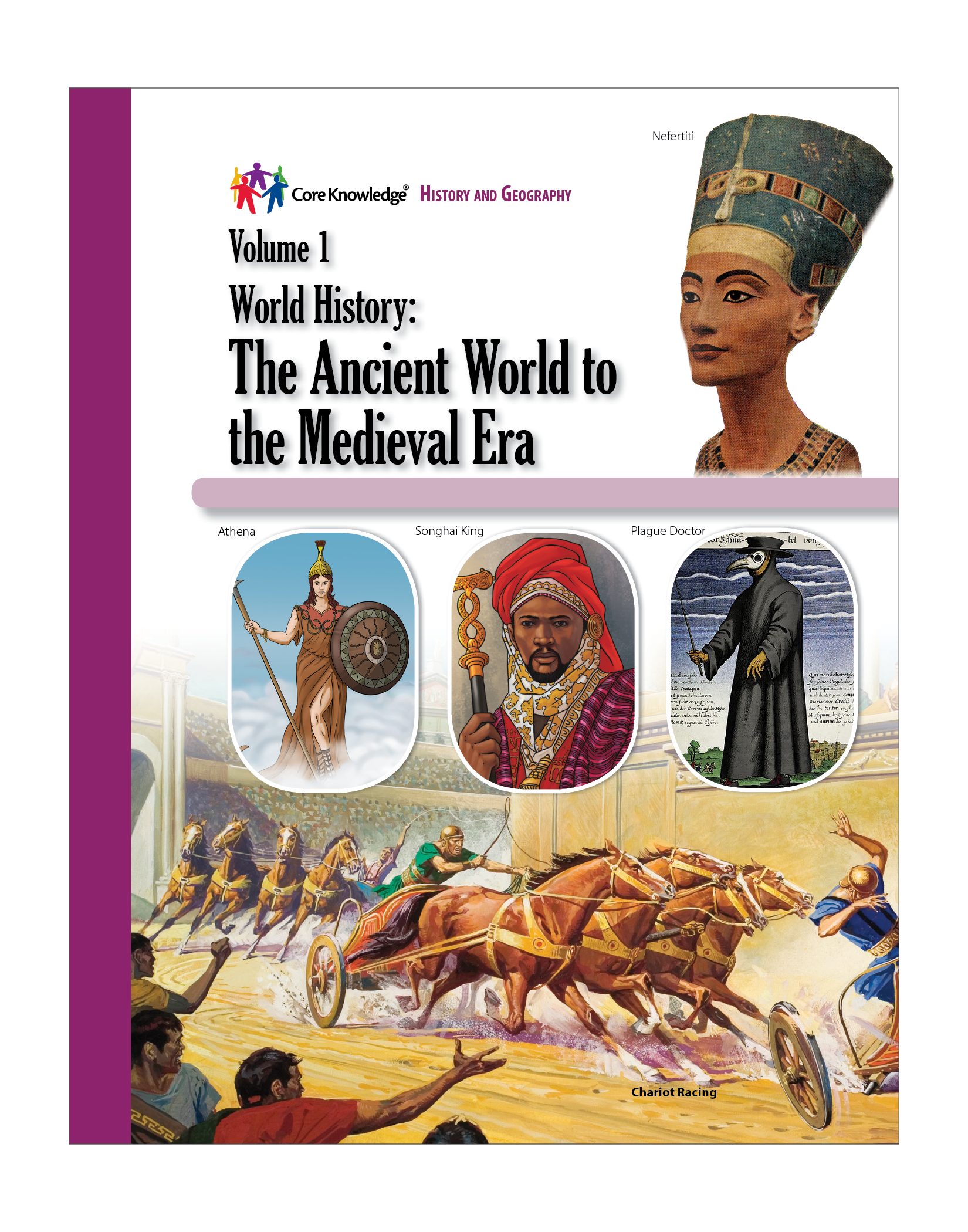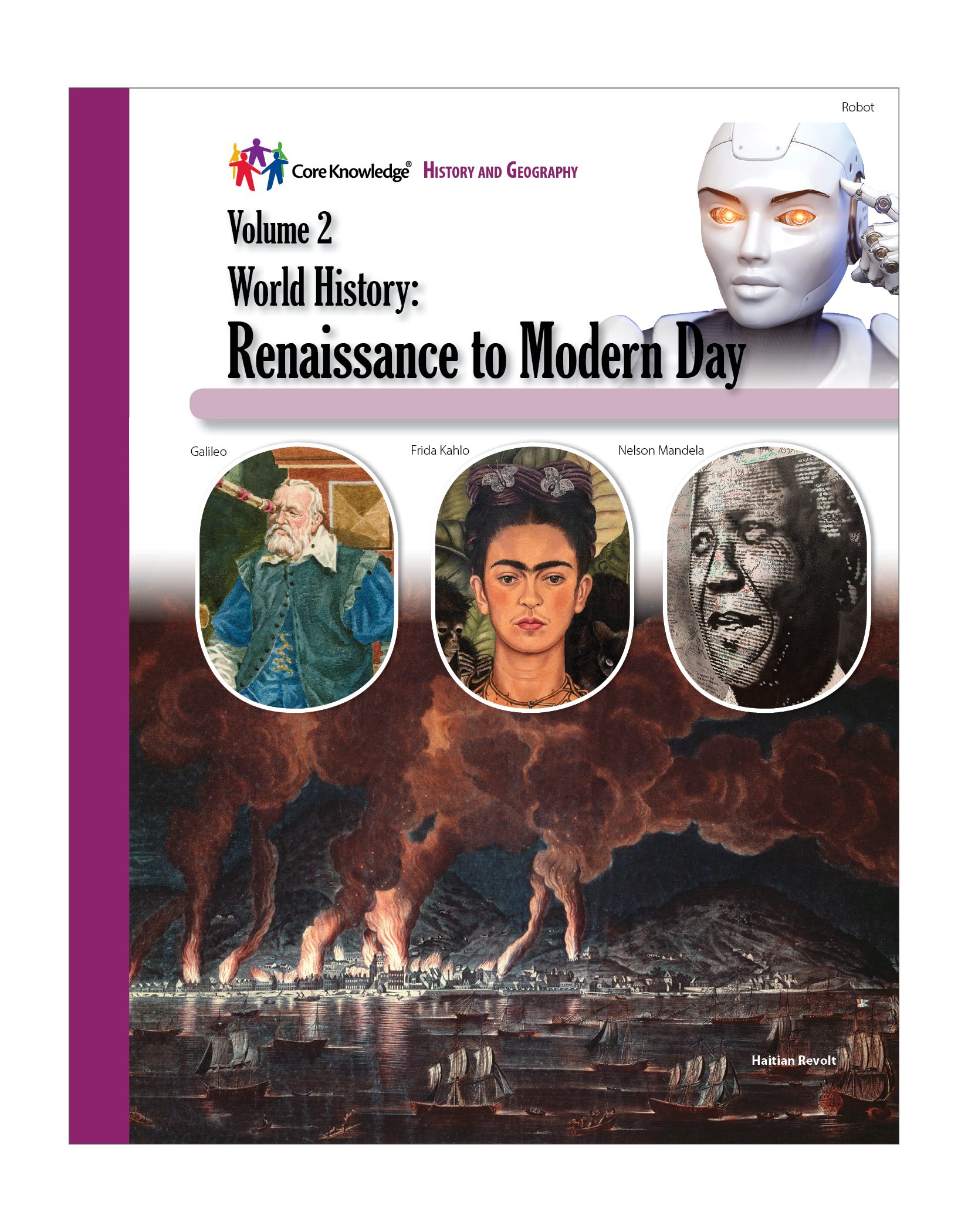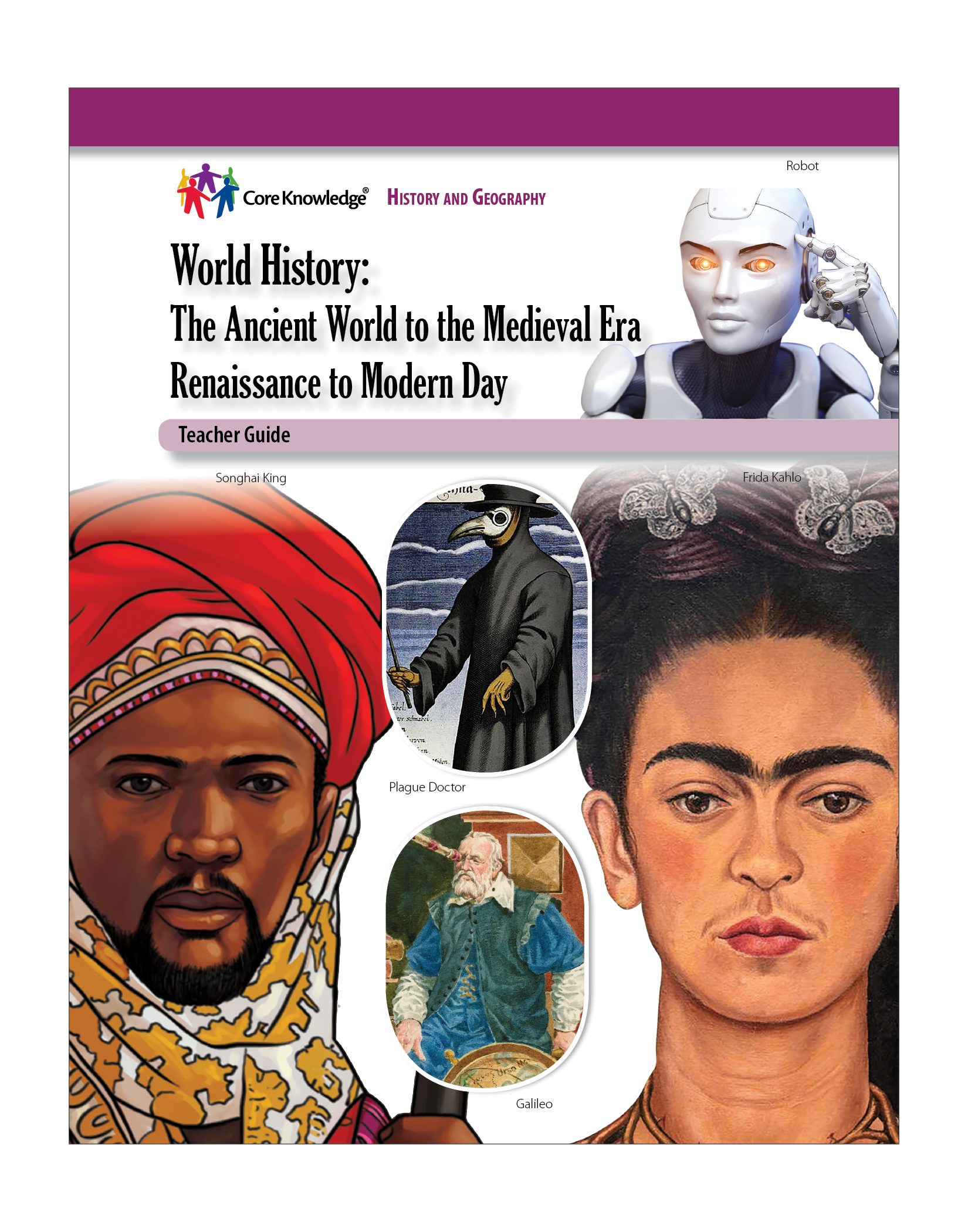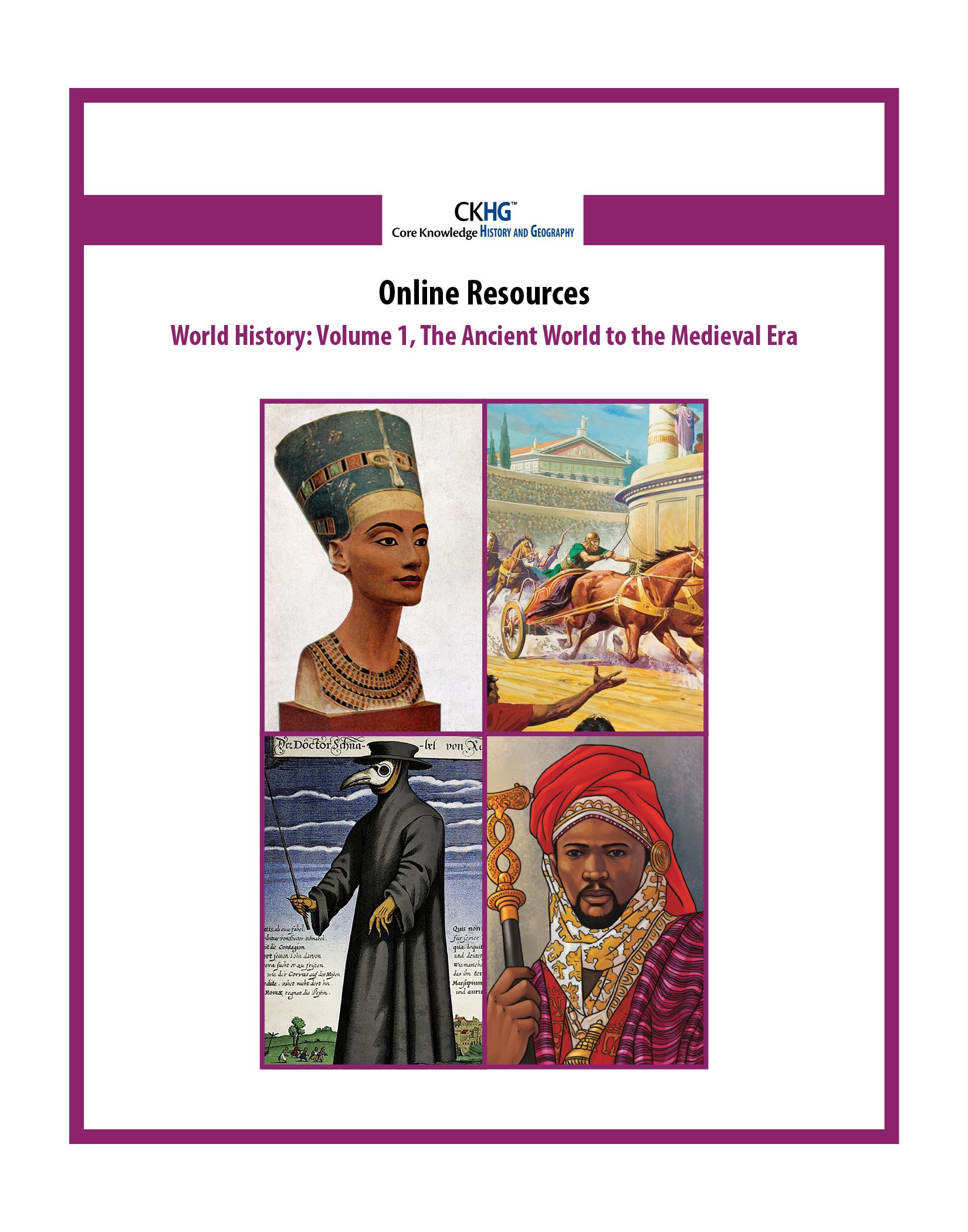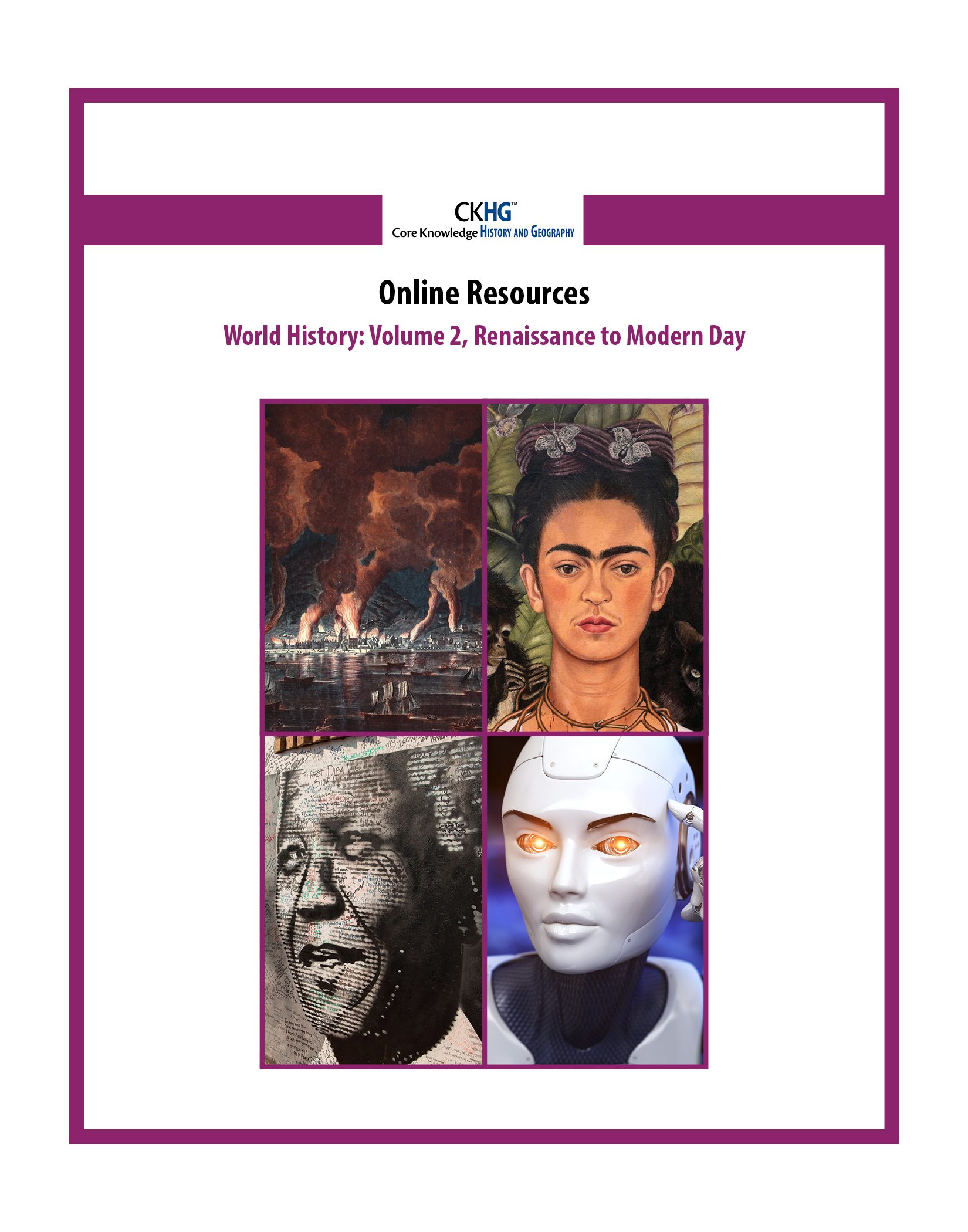
CKHG: World History
Focus:
The student volumes provide traditional narrative text and high-quality images that recount important historical themes and events in world history. Interspersed with the text and images are three types of activity boxes—Think Twice, Find Out the Facts, and Writers’ Corner—that encourage students to think about the content, extend their knowledge through research, and express their understanding through writing.
Volume 1 covers such topics as
- Complex societies developed independently in different cradles of civilization, including Mesopotamia, Egypt, the Indus Valley, China, and Mesoamerica.
- Ancient Greece and Rome laid the foundations for Western civilization.
- The modern world religions of Judaism, Christianity, Buddhism, Hinduism, and Islam have their roots in ancient and medieval civilizations.
- China introduced the world to new technologies—for example, silk making, paper, gunpowder, and new philosophies, such as Confucianism and Daoism.
- Mesoamerica and South America were home to developed civilizations such as the Maya, Aztec, and Inca before the arrival of European conquerors.
- The African kingdoms of Ghana, Mali, and Songhai dominated West Africa during Europe’s medieval period.
Volume 2 covers such topics as
- The Renaissance marked a renewed interest in the past as well as exploration of philosophy and artistic styles.
- The Protestant Reformation and the Counter-Reformation transformed European religion and politics.
- Interest in Asian trade and the development of new technologies sparked European exploration and colonization.
- During the Scientific Revolution and Enlightenment, Western scientists and thinkers applied reason and systematic study to seek to understand the physical world, human nature, and society.
- World War I was shaped by new technologies such as tanks, machine guns, and poison gas.
- World War II was a global effort to stop German expansionism in Europe and Japanese expansionism in Asia.
- After World War II, the Cold War between the United States and the Soviet Union helped shape events in Europe, Asia, and Latin America.
- The dissolution of colonial empires after World War II included conflicts in South Asia, Southwest Asia, Southeast Asia, and Africa.
- The early twenty-first century has been shaped by globalization, migration, terrorism, regional conflict, eradication of disease, and climate change.
NOTE: These materials are designed to be used during a full year of middle school. The complete U.S. history text can be used in either seventh or eighth grade for schools following the Core Knowledge Sequence. Pacing Guides will be provided for use of the full program that includes both student volumes for a school year, or separate volume guides for use to complete only one volume for a school year.
Number of Lessons: 17
(Volume 1: 9 Lessons; Volume 2: 8 Lessons)
Instruction Time:
45 minutes
(The time is for each lesson. Each lesson may be divided into shorter segments.)
Additional Search Terms:
Mayflower Compact • banish • congregation • medieval • monopoly • Mongol • diplomatic mission • agrarian society • monetary economy • conquistador • isthmus • yellow fever • convert • mutiny • armada • joint-stock company • gentleman class, cash crop • indentured servitude • proprietary colony • debtor • buffer zone • inhumane • cargo • tropical latitudes • sanctuary • proclamation • taxes • “the rights of Englishmen” • burgess • quartering • boycott • repeal • “trial by jury” • intolerable • resolution • self-determination • natural rights • abolitionist • secede • arsenal, draft • “tide of battle” • blockade • impeach • “high crimes and misdemeanors” • chattel slavery • imperialism • nationalism • militarism • “interlocking alliances” • Central Powers • Allied Powers • moving assembly line • celluloid film • prohibition • gangster • bootlegger • isolationist • League of Nations • stock market crash • GDP (gross domestic product) • Federal Reserve

